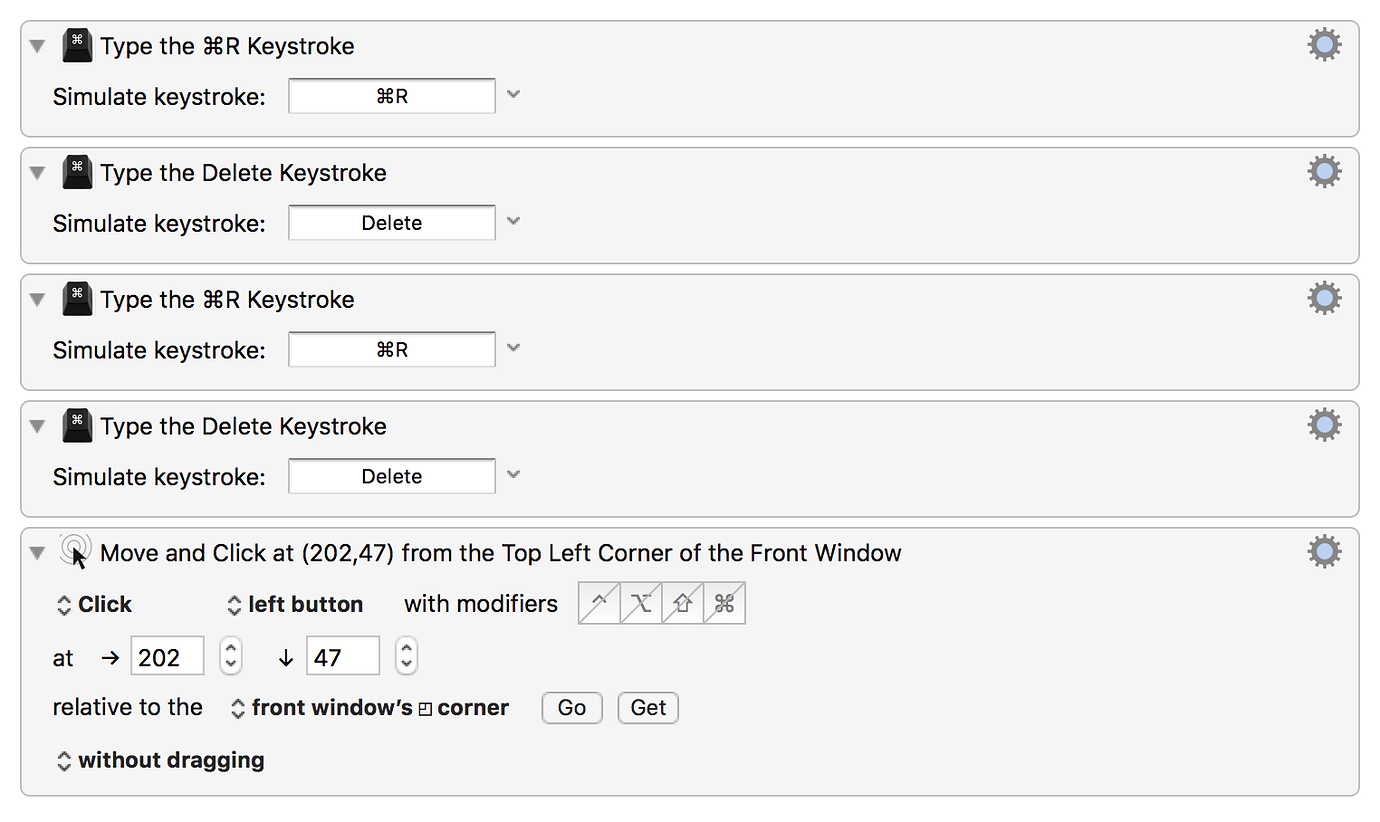

If an undeclared variable name is detected when the 'use strict' statement has been added, we are given a helpful warning: When we do this, JavaScript checks that all of our variables are declared (and therefore 'local' – visible only to their containing functions, and also temporary – vanishing when the evaluation of a function is completed). To use a less liberal but more helpful set of JavaScript rules, we can add the line 'use strict' Īt the start of a function. Misspelled variable names, and accidental uses of the same globally visible name in different parts of a script are rich sources of puzzling bugs and wasted time. Scripting on OS X Using Keyboard Maestro. JavaScript gives us a lot of freedom, sometimes more than is helpful. If someone in your team uses the app Keyboard Maestro, I can provide the macro. Messy and complex JXA – persistent global names Unfortunately the call/start of the 1Password Mini does not work if it is. You can execute shells scripts, AppleScripts, Automator Workflows, or filter the clipboard using BBEdit Text Factories. Good and simple JXA – temporary local names If I find a great song, I’ll often share it on Twitter. Advertisement Tweeting What You’re Listening to on Spotify When I’m working I listen to music using Spotify. The results of these can be stored as a variable. Keyboard Maestro’s Execute a JavaScript in Safari and Execute a JavaScript in Google Chrome actions are for interacting with web pages, the Execute a JavaScript in Custom Prompt action is for interacting with Custom HTML Prompts, whereas JXA is for automating OS X and OS X Applications via the Execute a JavaScript For Automation action. With Keyboard Maestro you can execute AppleScript, Automator, Shell and JavaScript actions. Later on, you may find it interesting to scan this output list for useful functions, but for the moment, it's enough to simply notice that the JXA JavaScript environment is very different from the set of web page (window and document) references that you find in the Browser JavaScript environments of Chrome and Safari. Using Keyboard Maestro Variables in a Shell Script from AppleScript AppleScripts can access variables by using environment variables (using system attribute) or by talking to the Keyboard Maestro Engine. After that choose Finder and you will get a box with two text boxes. We can either run this directly from from one of Keyboard Maestro's 'Execute a JavaScript for Automation' actions, or use an osascript command in an Execute Shell Script action. You can go to System prefrensces -> Keyboard -> Choose shortcuts from the menu above -> Choose 'App shortcuts' from the side menu and click the + button. In AppleScript with Keyboard Maestro Version 7. The result will be a listing of all the pre-defined names in JXA's osascript environment. You can view the built-in, default function provided by JXA by running this simple, one-word script: Using a numeral will make this item appear first in the list, and will be a helpful visual cue for what number to hit when you summon the palette. With additional access to a lot of low-level Apple system functions through the Objective-C object. Create a new group in Keyboard Maestro called Audio Switcher Create a new shortcut in this group.


 0 kommentar(er)
0 kommentar(er)
